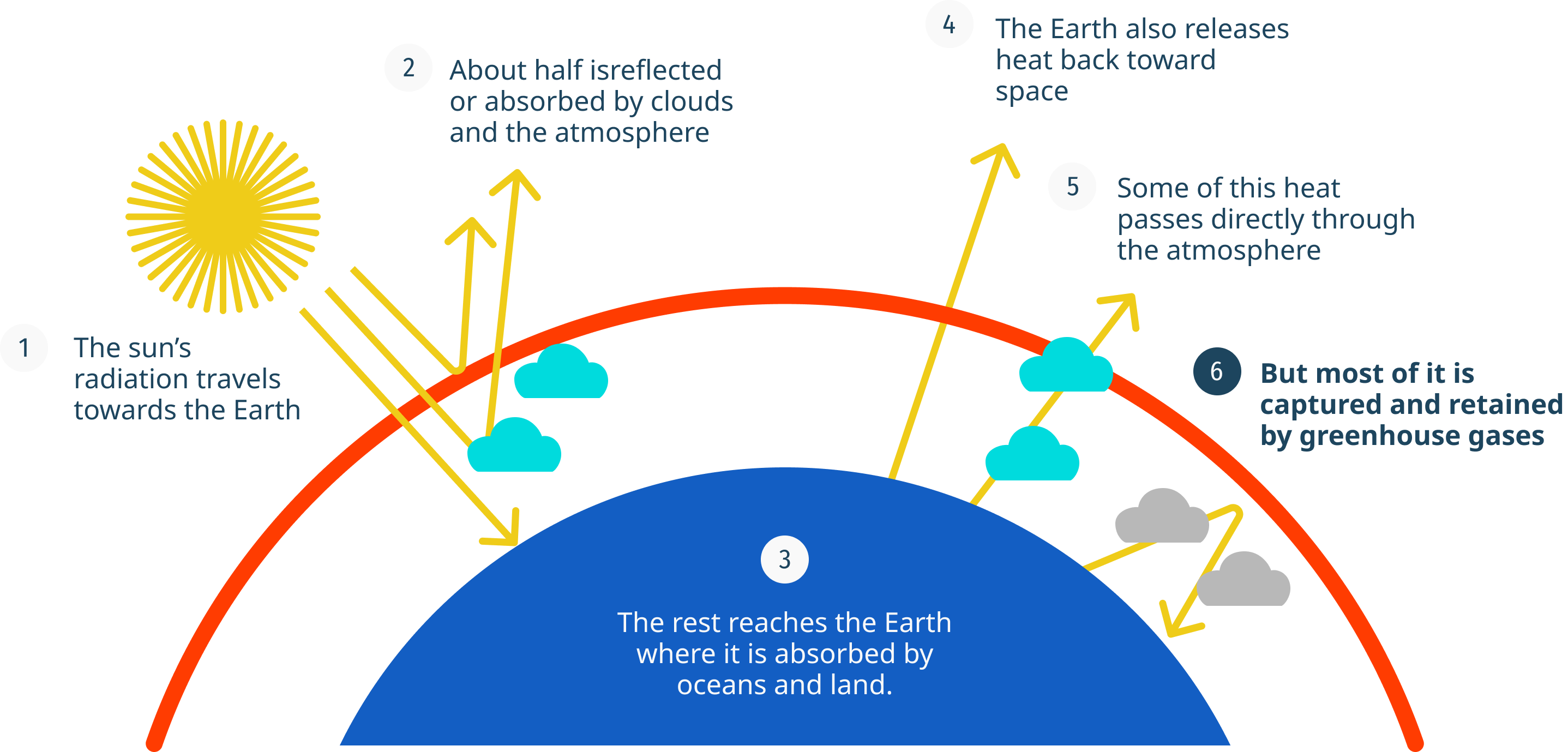The greenhouse effect is a natural process that involves the retention of heat near Earth’s surface by certain gases known as greenhouse gases. These gases help sustaining a higher earth’s temperature than it would have without them.
These greenhouse gases naturally exist in Earth’s atmosphere, contributing to its “perfect” conditions — neither too hot nor too cold — for life to flourish. However, over the past century, human activities, primarily the burning of fossil fuels, have released significant amounts of carbon dioxide and other greenhouse gases. This disruption has upset Earth’s energy balance, resulting in an accumulation of greenhouse gases in the atmosphere and oceans and a consequente rise in temperatures.
Water vapor (H2O), carbon dioxide (CO2), nitrous oxide (N2O), methane (CH4) and ozone (O3) are the main GHGs present in the Earth’s atmosphere. In addition, there are a series of GHGs entirely produced by man in the atmosphere, such as halocarbons and other substances that contain chlorine and bromine, treated under the Montreal Protocol.
The greenhouse effect

Sources
NASA. (n.d.). FAQ: What is the greenhouse effect?. NASA.
https://climate.nasa.gov/faq/19/what-is-the-greenhouse-effect/

